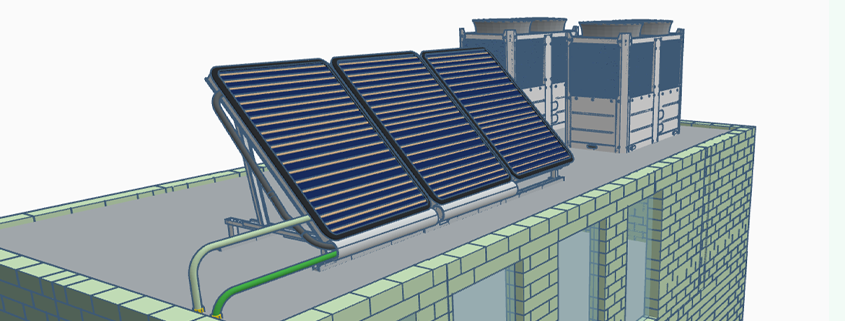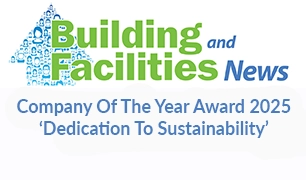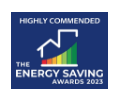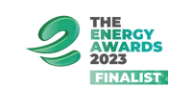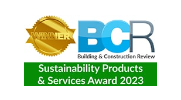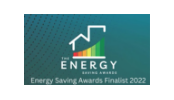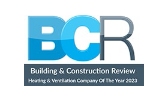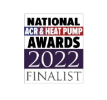The transition to net zero and a renewable future necessitates a multi-pronged approach across various sectors. In the commercial built environment, understanding the challenges and advantages of tackling three key areas stand out: retrofit, renewables, and sustainable refrigerants. These are the three Rs of net zero that need to be learned if we are to successfully decarbonise the built environment in the UK.
In this second part, we turn our attention to a Renewable Future…
Part 2 – Learning the Three Rs of Net Zero: A Renewable Future
According to data released in December 2024 by the Department for Energy Security & Net Zero dependency on fossil fuels was 71.8%, the lowest quarterly share this century due to reduced gas demand and displacement by renewables for a low carbon share of 24.6% in the third quarter of the year. This marked the highest percentage share for low-carbon energy so far this century.
But we are still a distance from achieving a truly renewable grid supply. The UK was still consuming 94 thousand tonnes of coal for electricity generation, 40% of which was sourced from Columbia in September of 2024, but this month also saw the closure of the only operational coal-fired power plant. With coal being phased out, the grid remains reliant on gas, nuclear and renewables. As we move into 2025 approximately 68% of electricity is being generated from low carbon sources of which 50% is deemed renewable.
This is why it remains important for commercial and public service organisations to not just consider a transition to electricity but seek to integrate renewable energy sources into buildings for active decarbonisation. Key technologies for generating clean renewable future electricity include small-scale wind turbines, solar photovoltaic (PV) panels that convert sunlight directly into electricity, plus ground-source heat pumps which utilise the stable temperature of the earth for heating and cooling.
Renewable DHW
For DHW applications, in terms of simplicity and efficiency, the recommendation is to deploy solar thermal, which collects solar energy as heat which is then transferred to stored water for distribution. Solar thermal is considerably more efficient for water heating than solar PV, so greater heating can be obtained from a smaller area of collectors meaning it is easier to fit to older buildings, especially when applicable roof or wall space is at a premium. Supplying system pre-heat solar thermal will typically offset at least 30% of a UK organisation’s annual water heating energy demands. Further South and West, the solar gains can be considerably more, especially from April through September. Solar can also be used after heat pumps providing mid-heat top-up for larger, more demanding systems for further carbon and operational cost reductions. In terms of water heating, solar thermal is the best understood and proven renewable energy source, which, if deployed as part of an all-electric system can achieve rapid return on investment (ROI). solar thermal is thus a real opportunity to deliver a renewable future.
Though typically grouped with renewables, air source heat pumps (ASHPs) are not a true renewable. When installed correctly in a well-designed system ASHPs will maintain efficiency to deliver heat to a system more effectively than direct electric heating. This is defined by the coefficient of performance (COP), best averaged across the year for a more realistic annual rating (Seasonal COP). The higher the SCOP, the better able the heat pump can generate low-carbon heat. ASHPs are designed to work best in lower temperature systems, with efficiency impacted by low ambient temperatures of air which heat is being drawn from by the ASHP and the temperature of the water that needs to be input into the DHW system. To ensure consistent output temperatures the heat pump will be required to work harder as the ambient temperature drops and to meet safe higher temperatures (60°C) required by commercial DHW systems. This additional work demands electrical input to the pumps, hence they are not a ‘true’ renewable but rather should be classed as low-carbon appliances. Maximising the efficiency of heat pumps in commercial-scale building projects is one of the core aims of the HVAC sector. For DHW this currently means deploying heat pumps as part of a wider application as opposed to a single technological response to the building’s demands. Such ‘hybrid’ approaches make optimal use of the heat pump to deliver lower, sub 55°c hot water as pre-heat to the system, then topping temperatures up to +65°c using electric boilers or a combination of solar thermal and electric water heating to assure low carbon, cost-effective to operate water heating systems capable meeting consistent and peak daily demands.
The alternative is to maximise the efficiency of the heat pump through the application of improved refrigerants to create higher-temperature heat pumps.
In the concluding part, we continue to track the theme of a renewable future as we turn our attention to the third ‘R’ of net zero, sustainable refrigerants…

